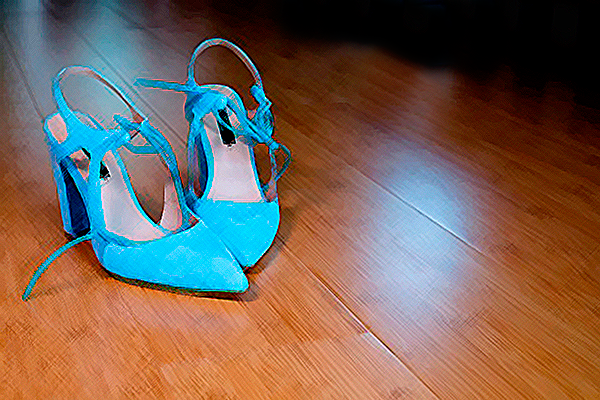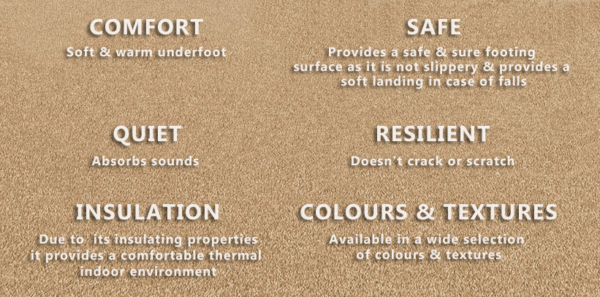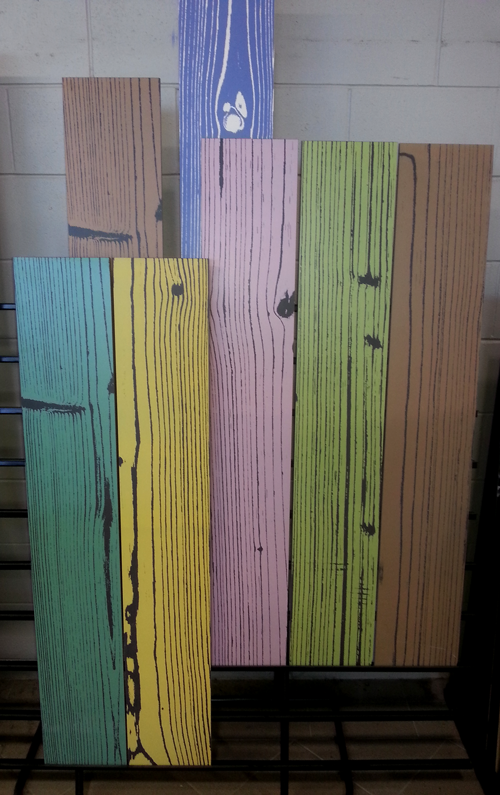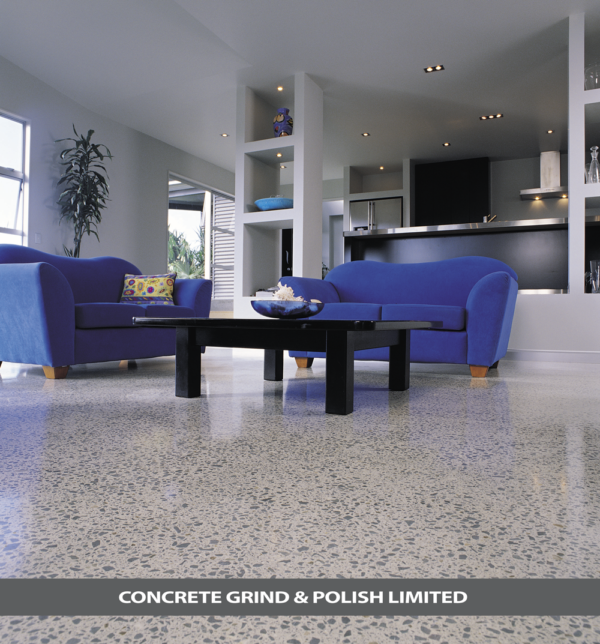In this second article on the types of flooring options, the team at Style Plus Renovations Auckland explore six more types of flooring options available for your renovation or custom new build.
Table of Contents
Vinyl & Linoleum Types of Flooring
Vinyl and linoleum (“Lino”) are popular cost-effective types of flooring that are available as either rolls or tiles.
Vinyl is made from PVC and has largely replaced linoleum which is a combination of tree gums, linseed oil, fine sawdust, limestone dust and pigments. Linoleum was invented in the 1860s and is still available under the brand name Marmoleum.
Vinyl Planks also known as Luxury Vinyl Planks (LVP) or Luxury Vinyl Tiles, or Hot Press Tiles are a newer product to New Zealand. However, they have been around for a few years and have proven very popular in residential renovations or new build scenarios.
Clients like them because they give the look of real wood flooring, warm underfoot and are easy to clean.
Costs for vinyl planks are from $45 per meter square. Floor preparation and other materials will need to be taken into consideration when undertaking a floor renovation.
Cork Flooring
Cork flooring types of flooring are a natural and renewable material.
It’s harvested from the bark of cork oak trees and is naturally resistant to mould, mildew and termites. It’s also anti-microbial.
Cork flooring does not shed microfibers to negatively affect indoor air quality.
A cork floor provides a comfortable cushion underfoot and is a natural thermal and acoustic insulator. This means that rooms with cork flooring are naturally warm and quiet.
Cork flooring is available in tiles and planks in many styles, colours and sizes. Using planks will create an almost seamless-looking floor. Alternatively, use tiles in single or alternating colours to create a non-traditional design.
When it comes to styling your home, cork types of flooring can also be used as an alternative wall covering.
Unlike vinyl, the pattern and colour of the cork penetrate the thickness of the material. Therefore as the cork wears the colour is retained. This provides a longer lifespan for the flooring.
The cost is from $100 per meter square, plus installation costs. If the flooring is not pre-finished there will be an additional cost to sand and polyurethane.

Carpet
When it comes to selecting your carpet, there have never been more quality carpets available to choose from.
Carpet types of flooring remain a popular floor covering choice and are available in wool or synthetic, rolls, tiles or rugs.
When choosing carpet types of flooring for your renovation you need to decide what you want or expect from your floor covering:
- Do you have children or animals?
- Are you going to stay in your home long term?
- Do you want something hard-wearing?
- Do you want your feet to feel a luxurious carpet?
The average price for carpet is $45 per meter square, plus underlay from $8 per meter square, plus laying costs. Some suppliers may have an all-inclusive price per meter square.
There are a number of different carpet fibre types and combinations – see the table below.
Remember that the type of carpet you choose is only part of the carpet-buying journey.
Before purchasing your carpet check the carpet warranties in detail as they are subject to conditions and exclusions.

Wool’s unique fibre structure makes it durable and hardwearing, so wool carpets keep their appearance longer.
Wool carpets can feel cooler in summer and warmer in winter. Wool has innate stain resistance properties, allowing spills to be cleaned more easily. It is also flame retardant and acts as a good insulator, helping to reduce ambient noise.
However, like all-natural fibres, you need to be careful of exposure to excessive sunlight or it may fade. Wool carpet on its own is not the most hard-wearing carpet fibre.
It is often blended with synthetic fibre like polyamide or polyester to give added strength, providing a luxury carpet.
Wool blends are generally 80% wool and 20% synthetic fibre but they do come in other ratios.
Blend carpets offer the resilience and durability found in synthetic fibres with the natural appearance and luxurious feel of wool.
Mixing synthetic fibre with wool does help to hold the twist definition in some carpet styles, providing improved wearing ability and reduced shedding from short fibres.
Used generally in cut plush pile and twist pile carpet styles.
Polypropylene is a less expensive synthetic fibre as it is manufactured using synthetic fibres. Polypropylene fibres have many similar properties and benefits as nylon fibres.
Polypropylene carpets have colour fastness properties that are associated with reduced fading due to sunlight and ozone exposure.
It also has resistance to moisture, mildew, water damage, staining, pilling, shedding and static.
Usually manufactured into loop-style carpets, they are generally used for low-traffic areas.
Triexta is the newest fiber in the carpeting industry.
Triexta is the product of DuPont – the same company responsible for the invention of nylon. Triexta (” Smartstrand® ” the brand name for triexta) is inherently stain resistant, as the fiber itself is hydrophobic (meaning it does not absorb easily).
Triexta is recognized as being more durable, resilient than conventional polyester and it’s as soft and as luxurious as wool. Triexta and polyester differ also in appearance.
The appearance of triexta is more similar to nylon than to polyester.
Triexta lacks polyester’s high lustre, and more closely resembles nylon’s matte finish.
Good for low traffic areas.
Nylon has been used in carpeting since the mid-1950s, so it has several decades of use to support its reputation for durability.
Nylon must be treated to resist stains, and stains that do penetrate that treatment can be difficult to remove.
When comparing a nylon carpet to a Triexta carpet of equivalent quality, there is little overall difference in durability.
It is worth noting that nylon is more resilient than Triexta, meaning that it bounces back from compaction more quickly.
For Solution Dyed Nylon (SDN), the colour goes through the whole yarn, like a carrot.
This makes SDN carpets incredibly fade-resistant. Generally good for heavy traffic use.
A new type of fibre, however it falls into the polyesters fibre class.
This type of fibre is manufactured using a solution-dyeing process in which the colour is manufactured into and throughout the.
This gives the fibre consistent and durable colour that stands up in tough environments, such as sustained direct sunlight, abrasion or chemical exposure.
It is generally classed as a hardwearing carpet.
As carpet technology progresses polyester has made great strides as a carpet fibre, particularly for P.E.T (polyethylene terephthalate) polyester fibres.
The fibre is made from P.E.T chips and some from recycled plastic containers.
This fibre has a natural stain resistance and abrasion resistance but does not have the same durability as the Triexta fibre. Polyester offers a way to enjoy a soft and plush carpet.
Tip: For the carpet types of flooring, try not to reuse existing underlay when you replace your old carpet. It will have the same wear patterns as the old carpet and these will quickly reappear in your new carpet. You may also be voiding your carpet warranty!
Tiles
Tile types of flooring come in a variety of materials, from ceramic to porcelain.
They are both water resistant and durable and available in a wide range of styles and finishes.
Timber-looking tiles have become more sophisticated. These types of tiles are available in many different colours, extra-long 1.8m lengths and many different styles including distressed finishes.
If you are looking for sophisticated, durable, low-maintenance flooring, wood may not usually come to mind. However, stylish timber-looking tiles or Andy Warhol’s inspired tiles will give you the look and functionality.
Designed to be a modern take on hardwood floors, this tile trend has inspired a variety of looks with a range of sizes, colours and finishes.
Selecting the tile size comes down to personal taste and the required function of the tile. Different sizes of tiles may give quite a different effect.
One general rule is that larger tiles on the wall and on the floor will tend to make the room appear larger. Also, fewer grout lines create a more open look.
The cost is from $30–$75 per meter square with the higher fashion related going up as high as $180 per meter square – plus laying and substrate preparation costs.

Polished Concrete Flooring Options
Polished concrete types of flooring is a surface finish that is finding more favour with new builds and renovations.
The polished effect is created using a series of increasingly fine diamond discs. Colours, etching and unusual stones can be added for visual effect.
For a new build, the first step in grinding is usually undertaken before the framing is erected. However, if this is not possible then it can be carried out before the GIB board is fixed.
The final steps are completed at the end of the painting or the end of the GIB stopping before the skirting is fixed.
Make sure your concrete pour team are good and provides you with as even a finish as possible otherwise when the time comes to grind the floor, they will have a tough time getting it even.
For renovations, older concrete floors can be polished. For example, a process would be that a special chemical is used to harden the floor. Then a solution is used to pit fill the floor to a glassy finish (no holes).
Then the floor is polished and finally, stain protection can be applied to give the stones their natural hues.
Polishing your standard foundation floor is about equivalent to an expensive carpet or a mid-range solid timber overlay.
Costs from $50 – $130 per meter square.

If you are interested in other types of flooring timber options, check out our article on 4 Flooring Types For Your Renovation (Part 1).
Get started with a Free
Architects Renovation Feasibility Report
LET'S START
YOUR RENOVATION PROJECT
Tel us about your renovation project and we’ll call you back for a no-obligation chat about your ideas.
Alternatively, if you prefer, we can initially set up a meeting using Microsoft Teams or Zoom (and other meeting apps) for a no-obligation chat about your ideas.
We look forward to hearing from you to discuss your project and get you started on your renovation journey.
If you would like to know more about our renovation process, check it out here.

